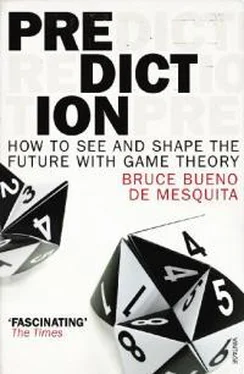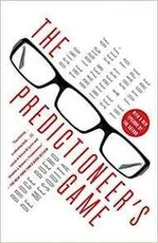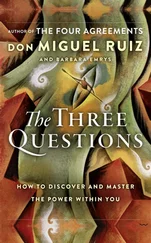Big firms have millions of shareholders. Yet few of them attend the annual shareholders meeting, and they have little idea of how the business is run or how it might have done if it had been run differently. They dutifully send in their proxy, voting the way the board suggests, or they toss their proxy statement in the recycling bin and do not vote at all. Big blocs of votes are controlled by a small number of institutional investors, senior executives, and directors. They, not the shareholders, decide how to run the company. The more institutional investors and powerful shareholders there are, the more parties to whom the management is accountable. Ring a bell? It’s the challenge presented to any leader: the more “democratic” the system (think of democracy not as an absolute concept but rather as a continuum), the more people to please.
When things are going well, the incentives for the executives running a company are not incompatible with the shareholders’ interests. Growth in profits is good for the executives and it is good for the shareholders. But sometimes things do not go well. Then the interests of management and shareholders might part ways. Let’s see why.
In developed equity markets, the fraud model indicates that accounting fraud typically results because management is trying to preserve shareholder value. Don’t get me wrong. The fraud model does not think of executives as altruists who lose sleep trying to think up ways to make shareholders better off. They commit fraud to protect their jobs in the face of poor performance rather than as a result of a desire to defraud investors per se. That means we can use public records to link the likelihood of fraud to any publicly traded corporation’s reported performance, ownership oversight, and governance-induced incentives to manage the firm truthfully.
Examining publicly available information taken from SEC filings, my colleagues and I found that the amount paid in dividends to shareholders and salaries to senior management during years of honest reporting and during years immediately preceding fraudulent reporting differ in significant ways. In the fraud years, senior management receive less compensation—you read that right, less compensation, not more—than expected given their corporate governance structure and reported corporate performance. Dividends typically also fall short of expectations. All the while, reported performance and therefore the firm’s growth in market capitalization look healthy, just as they do in honest years. It is important to note that the compensation for senior management may still have increased in such fraud years, and in an absolute sense may still be quite grand, but the critical point is that if things are really going so swimmingly for the company, then compensation should be even higher than it is.
The logic behind the model we designed pinpointed these as trends to look for. We didn’t know whether we would actually find these patterns in SEC filings, but we did know that they were the key to predicting fraud if our model was right.
Why these patterns? CEOs always have incentives to take actions that protect their jobs. If they see that their company is not performing up to market expectation, they are at risk and will take action to salvage their situation. Now, they can argue that the firm is the victim of unforeseeable shocks for which they should not be held accountable (this was the argument made by the CEOs of GM and Chrysler in seeking a government bailout—they pointed to the economic downturn, not management’s decisions, as the cause of the auto industry’s woes), but such arguments are risky to say the least, and may not be adequate to protect a CEO’s job.
If blaming the economy or some outside force doesn’t salvage senior management’s situation, then the top executives might misrepresent the corporation’s true performance. If they can sell the belief that the company is performing just fine, then they won’t be at risk of being fired. It is difficult for outsiders to know the corporation’s true volume of sales, revenue, costs, and profits. Market capitalization reflects these factors, and indeed these are the factors that when falsely reported and subsequently detected result in accusations of accounting fraud.
If revenues are exaggerated or costs are understated, then senior executives can temporarily lead the marketplace to misjudge the true worth of a company, making the company appear (falsely) to have met or exceeded expectations. This, the model suggests, is the essential motivation behind corporate fraud.
This wedge between lower-than-expected stock dividends and compensation for executives and seemingly normal or good growth in market capitalization is therefore an early-warning indicator of an elevated risk of fraud. Neither the SEC nor many corporations, however, seem to realize the importance of this information in detecting early signs of trouble. Sarbanes-Oxley certainly does not draw attention to analyzing the size of this benefits wedge.
The game’s logic and the evidence culled from more than a decade of corporate filings across hundreds of firms also raise questions about journalistic accounts and popular perceptions. A pretty standard journalistic view of fraud is that greedy executives act to enrich themselves at the expense of shareholders and employees, that they are little more than looters, and that the problem boils down to outrageous character flaws. This kind of thinking gets us nowhere.
Too often we look at what happened most recently and assume that earlier actions were motivated by those ends. It is easy to believe that greedy executives cook the books to enrich themselves, with self-interest tied merely to short-term gain (of course I would never argue that self-interest isn’t the key motivation, but we must examine exactly what the nature of that self-interest is). But in doing so we forget, for example, that Enron’s fraud started around 1997 and yet the senior managers did not sell off their shares until around 2000 and 2001. Why would they have waited so long, risking discovery for years, before cashing out? True, stock prices were going up, but equally true, the risk of being uncovered grew greater and greater with each passing month and year. Did they really only seek the gains to be made in the period from 1997 to 2001, or were they hoping for much greater gains five, ten, or fifteen years on?
We won’t analyze the problem properly if we look for the causes of fraud in its end result. Remember, correlation is not causation—the beginning, not the end, is where the explanation lies.
In the Enron case, it seems clear that by 2000 or 2001 the most senior leadership in the company realized that they could not fix its problems. Having reached the end of the corporate game, they cashed out. It is despicable that they did so while covering up the true state of affairs, thereby leaving their pensioners on the hook. But it seems equally evident that Enron’s senior management did not hang on for four years before cashing out just to enrich themselves and walk away. All that time, according to the game’s logic, they were trying to save the company because their longer-term interests would be rewarded if they were successful in doing so. If the numbers had to be fudged while they corrected the company’s course, so be it. In their view, the end justified the means. None of that was going to happen if the shareholders, and especially if key board members, found out what trouble Enron was in.
Give executives the wrong incentives and you can count on their taking actions with bad social consequences. Give them the right incentives and they will do what is right, not because they are filled with civic virtue but because it will serve their own interests. Remember Leopold? He had pretty good incentives in Belgium and he did good things there. He had horrible incentives in the Congo and he did horrible things there.
Читать дальше











